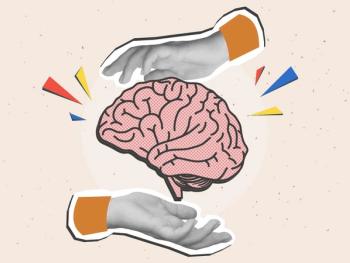
Temper Tantrums, Mental Disorder, and DSM-5: The Case for Caution
One of the impulse-control disorders, Intermittend Explosive Disorder includes serious acts of aggression against person or property that are completely out of proportion to any provocation.
Using data from the replication of the National Comorbidity Survey (NCS-R), undertaken in the 2years to April 2003, Kessler et al1 explored the epidemiology of DSM-IV Intermittent Explosive Disorder (312.34: IED). One of the impulse-control disorders, this includes serious acts of aggression against person or property that are completely out of proportion to any provocation.
The NCS-R used trained lay interviewers to administer the third edition of the World Health Organization Composite International Diagnostic Interview (CIDI),2 a fully-structured instrument which generates diagnoses according to WHO and DSM-IV standards. For the purpose, they operationalized the DSM criteria, detailing how the interviewers scored the responses, and their methodology appears sound. Using broad and narrow definitions, they concluded that the incidence of this condition is somewhere between 5.5% to 7.5% of the population, with onset in early teenage years and a high level of persistence. It also has a very high rate of comorbidity, with a range of other psychiatric conditions such as affective disorder, anxiety disorders, substance abuse, and other impulse control disorders (the study did not screen for all personality disorders but excluded Antisocial PD). It is associated with being a young adult male, with poor education, low socioeconomic status and disturbed interpersonal relationships. The level of total disability associated with this diagnosis is high. In the main, these people are not recognized and rarely accessed treatment.
At the same time, throughout psychiatry, there has been a continuing debate over the status of aggressive behavior in children and in relation to other disorders. Lee and Galynker3 reported that “just under 50% of people with bipolar disorder have some history of violent behavior.” Violence can occur in manic or in depressive states, or even in euthymic moods. They saw a close and compounding relationship between childhood trauma and violence in adult Bipolar Affective Disorder (BAD): “A history of 2 or more types of trauma has been associated with a 3-fold increased risk of bipolar disorder, as well as a worse clinical course that includes early onset, faster cycling, and increased rates of suicide.” Early trauma complicates adult affective disorder by predisposing to substance abuse, criminality, and personality disorder. In general, early onset of aggressive behavior indicates a poorer prognosis, and not just for the affective disorder. So what is the disorder, and what should be treated?
Illness or personality?
While the diagnosis rates of pediatric bipolar disorder (PBD) have leapt by some 4000% in 20 years4 (and by twice that in this country), the diagnostic criteria have been broadened to include children who are consistently (not episodically) irritable, impulsive and aggressive. Frances saw this as evidence of a “fad diagnosis,” the clear implication being that something beside science is driving the process: “
Dr Frances didn’t mention the obvious point--that there is intense social pressure to control just these behaviors before they harden into adult patterns of antisocial conduct. The “influential prophets” were, of course, names who have been unhappily linked to the decidedly partisan drug industry. The unstated agenda is that if all these children and adolescents can be prescribed (expensive) drugs to control their genetic disease, they will need them for life. Frances was greatly concerned by this process, and listed a number of very real complications of this “fad.” He supported moves by the DSM-5 Childhood and Adolescent Disorders Working Group5 to restrict the diagnosis by relocating irritable and/or aggressive behavior in another diagnostic category, such as “Severe Mood Dysregulation: SMD” (or Temper Dysregulation Disorder: TDD).
The Working Group is aware of the complexities they face in arriving at a universally accepted definition: “Indeed, a subgroup of the Attention Deficit/Hyperactivity Disorder and Disruptive Behavior Disorders and Childhood Disorder Work Groups expended considerable energy devising a proposal for a specifier for the Oppositional Defiant Disorder (ODD) diagnosis that would differentiate the SMD/TDD phenotype from the rest of ODD, given that new specifiers require a lower level of evidence than do new diagnoses…the two work groups decided that an ODD specifier would be unlikely to be used by clinicians to diagnose youth with SMD/TDD, since ODD is not a mood disorder (while TDD would be).”
In English, that asks whether we should put temper outbursts in with depression and other mood disorders (ie, in the clearly-defined cluster of genetically-determined chemical imbalances of the brain, or should they be lumped with the personality disorders?). Is an impulsively aggressive person with a long record of assault, drug and alcohol abuse, poor work record, and unstable interpersonal relations suffering a formal mental illness (with all the forensic and social complications that would imply), or is he or she simply choosing to act this way, and is therefore responsible for his/her actions? This is not a trivial question, but it flows directly from the question of whether “such diverse symptoms as irritability, anger, agitation, aggression, distractibility, hyperactivity, and conduct problems” are or are not of the same ontological nature as depression and hallucinations. For example, in Australia, which has universal welfare and treatment, if these behavioral factors are held to be mental illness per se, then the “sufferer” is entitled to a pension for life, unlimited (world class) treatment, and an endlessly renewable excuse for all manner of antisocial conduct.
Axelson notes that TDD overlaps substantially with ODD, as it does with many other childhood disorders, mainly because “…all of its core diagnostic criteria are shared by other DSM disorders. There are no signs or symptoms that are unique to TDD.”6 He gives case vignettes to suggest that, in childhood, there are many syndromes presenting with the clinical features of TDD. A fortiori, this would be true in adults. He concluded: “It seems clear that TDD does not have a sufficient level of research support to justify creating a new psychiatric diagnosis. Then why has it been proposed? The primary reason … is the need to stem the tide of the perceived substantial overdiagnosis of bipolar disorder in children.” That is, symptoms which, in adults, are taken to indicate personality disorder are, in children, reclassified as mental illness for reasons of payment and, I suspect, because clinicians are loath to damn children with a diagnosis of PD.
It is my view that the drive to establish a novel mental illness consisting of ferocious outbursts of temper is driven by the same imperatives.
Why does mental illness trump personality disorder?
Echoing the alarming findings described by Axelson, Kessler’s group found very substantial levels of “comorbidity” in their study. Of people reaching criteria for IED, well over one third had a mood disorder and nearly two thirds had an anxiety disorder. Over one third described substance abuse while nearly half met criteria for another adult impulse control disorder. No less than one half of their subjects had three or more separate additional diagnoses. Remember that the NCS-R omitted a number of diagnostic categories; there is no reason why these should not have been found in their group, only that they didn’t look. Moreover, there was a consistent pattern of disturbed behavior over many years, with many associated features of psychosocial dysfunction. Property damage was common, as was injury of self or others (an average of 2.33 injuries per outburst). In the narrowly-defined group, starting early in life and continuing throughout adulthood, there had been as many as hundreds of outbursts, often averaging an event every couple of weeks for years.
We are left with the picture that dangerous temper outbursts are common to a considerable number of diagnostic categories; they start early and are persistent; and are seen in conjunction with many factors commonly seen in personality disorder Do they therefore represent a formal mental illness in their own right, or do they signify some deeper process-- perhaps even a universal mental factor? Compare this picture with the definition of personality disorder in DSM-IV-TR: “A. An enduring pattern of inner experience and behavior that deviates markedly from the expectations of the individual’s culture. The pattern is manifested in two or more of the following areas: cognition…affectivity…interpersonal functioning…impulse control. B. The enduring pattern is inflexible and pervasive across a broad range of personal and social situations…” It leads to distress or impairment in social, occupational or other areas, begins in childhood or adolescence and is stable. Other mental disorders and substance abuse are not causative but may coexist.
I submit that the pattern of disturbance outlined by Kessler’s group in their account of IED precisely meets the criteria for a personality disorder. They are searching for an illness when in fact all they have done is to isolate a common personality factor that is evidence of a more pervasive, underlying personality disorder. Why would they bother? We can diagnose personality disorder with the greatest of ease; all one has to do is take a longitudinal history and the diagnosis declares itself. Personality disorder can coexist with any number of formal mental disorders just because personality is logically before mental disorder.
It seems clear that IED is yet another “fad” diagnosis in the making. Where will it stop? More precisely, what intellectual process within the field of psychiatry limits the apparently endless drive to increase the number of psychiatric diagnoses at the expense of personality diagnoses? The answer, of course, is that there is no limit. Just because modern, orthodox psychiatry has not articulated a model of mental disorder7-8 nobody can say that a particular symptom or behavioral parameter belongs in the field of mental disorders or whether it should be left as a personality factor. In the absence of a declared model of mental disorder, psychiatry fails the first requirement of any field of science.9 Nosology becomes a matter of “interest groups” pressuring “the system” until it grants them what they want--a case example of the politics of committees rather than applied science.
Conclusion
I do not believe the interests of people with primary personality disorders are properly served by misclassifying them as mentally ill. They will simply be given large doses of unpleasant, expensive, and sometimes dangerous drugs with no prospect that their condition will improve or that their lives will benefit. Their hopes will be built up, then dashed, which is not a good idea in dealing with the personality-disordered. More to the point, they will not be offered whatever (limited) treatment options are appropriate to their diagnosis. In the longer term, failing to recognize personality disorder restricts it to a second or even third order consideration: there is very little primary psychiatric research on personality disorder. We don’t have a scientific model of personality disorder, just because we don’t have a model of personality, but spending all our time reclassifying personality-disordered people as mentally ill means that we will never see the problem as sufficiently important to divert resources from the biological industry. I am also unconvinced that the interests of the mentally ill are well-served by lumping them with dangerous and/or aggressive people, but that is another matter.
What counts is that psychiatry’s obsession with reaching valid diagnoses is taking place at the expense of generating a model of mental disorder. Influential figures already recognize that the massive resources being spent on DSM-5 are unlikely to achieve their goal10 so why do we bother? As an outsider, I suggest that the major impetus to persist with what is clearly a non-scientific approach is the result, not of rational factors, but of the egos of the many people who have committed their professional lives to articulating a sterile vision of psychiatry. I have argued elsewhere7-8 that, at this stage of its development, DSM is the wrong program for psychiatry. The attempt to reclassify personality disorder as a new mental disorder known as IED demonstrates the point. When it comes to arguing that mental disorder and personality disorder can be conflated, the burden of proof rests with its advocates. So far, not one of them has offered a remotely convincing case.
References:
References:
1. Kessler RC, Coccaro EF, Fava M, et al. The Prevalence and Correlates of DSM-IV Intermittent Explosive Disorder in the National Comorbidity Survey Replication. Arch Gen Psychiatry. 2007;63:669-678.
2. Kessler RC, Ustun TB. The World Mental Health (WMH) Survey Initiative Version of the World Health Organization (WHO) Composite International Diagnostic Interview (CIDI). Int J Methods Psychiatr Res. 2004;13:93-121
3. Lee AMR, Galynker II. Violence in Bipolar Disorder: What Role Does Childhood Trauma Play? Psychiatr Times. 2010;27(11):32-34.
4. Francis A. Psychiatric Diagnosis Gone Wild: The "Epidemic" Of Childhood Bipolar Disorder. Psychiatr Times. April 8, 2010. At http://www.psychiatrictimes.com/bipolar-disorder/content/article/10168/1551005 Accessed December 17, 2010.
5. Justification for Temper Dysregulation Disorder with Dysphoria DSM-5 Childhood and Adolescent Disorders Work Group. DSM-5. At:
6. Axelson D. Adding the Diagnosis of Temper Dysregulation Disorder to DSM-5: Do We Really Need It? Psychiatr Times. 2010;27(11):9-14. http://www.psychiatrictimes.com/display/article/10168/17450807. McLaren N. Humanizing Psychiatry: The Biocognitive Model. 2009; Ann Arbor, Mi.: Future Psychiatry Press. ISBN 978 1 615990 11 5.
8. McLaren N. Humanizing Psychiatrists: Toward a Humane Psychiatry. Ann Arbor, Mi.: Future Psychiatry Press. ISBN 978 1 615990 60 3
9. Kuhn TS. The Structure of Scientific Revolutions. 2nd Edition, 1970. Chicago, Ill: University Press (International Encyclopedia of Unified Science, Vol. 2, No. 2
10. Insel T, Cuthbert B, Garvey M, et al. Research Domain Criteria (RDoC): Toward a new classification framework for research on mental disorders. Commentary. Am J Psychiatry. 2010;167:748-751.
Newsletter
Receive trusted psychiatric news, expert analysis, and clinical insights — subscribe today to support your practice and your patients.

















